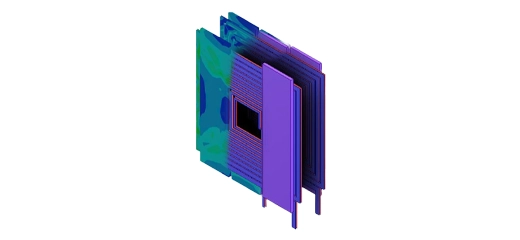Eddy current versus traditional braking
Typical braking systems (hydraulic, pneumatic, mechanic) employed in most vehicles are designed to slow or halt the motion by converting kinematic energy into heat by friction. This type of brake suffers from several drawbacks including overheating, wheel damage, boiling or leaking of the brake fluid, low air pressure in pneumatic brake, and regular maintenance. On the other hand, eddy current, or electromagnetic, braking systems, which are based on Faraday’s law of induction, are contactless; these brakes have several advantages including wear-free, frictionless, less noise, low maintenance, protection from overheating, safety, and high efficiency in high-speed situations. They are used in many applications like traditional and maglev trains, automotive and heavy engines, roller coasters, gym and rowing machines, robotic and medical equipment, and wind turbines. However, eddy current brakes have some drawbacks such as low torque at low speed, and no ability to hold the moving load at a stationary position.
Physics behind eddy current braking
A conductive object moves through a stationary magnetic field and develops induced currents called eddy currents, as described by Faraday's law of induction; by Lenz's law, the circulating eddy currents create their own magnetic field that opposes the source field. Hence the moving conductor experiences a magnetic force that opposes its motion and is proportional to its velocity. The kinetic energy of the moving object is dissipated as heat generated by the current flowing through the electrical resistance of the conductor. The source of the magnetic field can be permanent magnets, electromagnets, or a combination of them.
One-stop braking system design platform
Key design issues and challenges
- Torque calculation of permanent magnet, electromagnet, and hybrid braking systems,
- Torque versus speed and air gap distance,
- Torque versus PMs, PMs arrangements and Halbach, and number of poles,
- Torque versus excitation current,
- Optimize the torque versus several inputs like air gap distance, moving parts geometry, i.e. disc thickness/diameter, configuration of the PMs,
- Deceleration torque and time,
- Dissipated power,
- Temperature evolution in a braking system.



